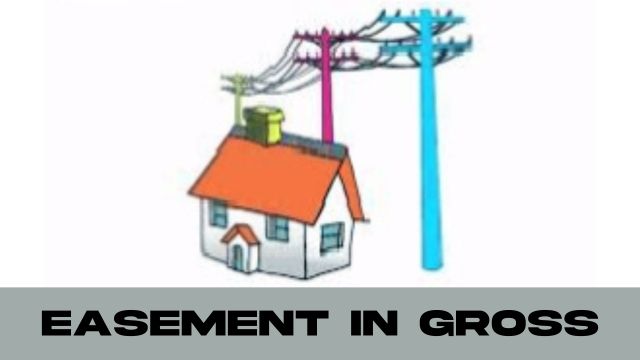
The generation wealth gap refers to disparities in wealth accumulation between different generations, often influenced by factors like economic conditions, education, housing, and job opportunities, leading to significant differences in financial stability and prosperity across age groups.

Average net worth per generation
The average net worth varies significantly across generations:
- Baby Boomers (1946-1964): Highest average net worth, benefiting from decades of economic growth, homeownership, and stock market investments.
- Generation X (1965-1980): Building wealth but facing challenges like student debt and economic recessions.
- Millennials (1981-1996): Lower average net worth, impacted by student loans, rising housing costs, and economic instability.
- Generation Z (1997-present): Just beginning to accumulate wealth, with most still in education or early career stages.
What is the Generational Wealth Gap?/ Generations wealth gap
The generational wealth gap refers to the significant disparities in wealth accumulation and financial stability between different age groups, often driven by economic conditions, policies, and social factors. Key contributors include:
- Economic Conditions: Older generations, like Baby Boomers, benefited from post-war economic growth, affordable education, and stable job markets.
- Housing Market: Boomers and Gen X had more opportunities for homeownership at lower costs, while Millennials and Gen Z face higher housing prices and rents.
- Student Debt: Younger generations carry more student loan debt, impacting their ability to save and invest.
- Job Market: Millennials and Gen Z have faced more economic recessions and job market instability, affecting long-term financial growth.
These factors lead to significant differences in net worth, financial security, and opportunities across generations, impacting overall economic mobility and equality.
Read more: Understanding the National Debt | Debt chart us
Why Is There a Generational Wealth Gap?
The generational wealth gap exists due to several key factors:
- Economic Conditions: Older generations, such as Baby Boomers, benefited from post-war economic booms, stable job markets, and higher wages relative to cost of living. Younger generations have faced more economic recessions and instability.
- Housing Market: Boomers and Gen X had greater access to affordable housing and lower interest rates. Millennials and Gen Z face significantly higher home prices and rental costs, making it harder to build home equity.
- Education Costs: College tuition has increased dramatically over the past few decades, leading to higher student loan debt for Millennials and Gen Z, which impacts their ability to save and invest.
- Wage Stagnation: While living costs have risen, wages have not kept pace, particularly for younger workers, limiting their ability to accumulate wealth.
- Retirement Benefits: Previous generations had more access to employer-funded pensions, whereas younger workers rely more on individual retirement accounts (IRAs) and 401(k) plans, requiring personal contributions and investment acumen.
- Social and Economic Policies: Policies favoring capital gains and investment income benefit those with existing wealth, often older generations, exacerbating wealth disparities.
These factors contribute to significant differences in wealth accumulation, financial stability, and economic opportunities across generations, perpetuating the generational wealth gap.
Generation of wealth
The “generation of wealth” refers to the processes and strategies by which different generations build, manage, and pass on financial assets and resources. Here’s a breakdown of how wealth is generated and managed across generations:
1. Baby Boomers (Born 1946-1964):
- Wealth Generation: Benefited from post-war economic growth, rising property values, and stable job markets. Accumulated wealth through homeownership, investments, and employer-sponsored pensions.
- Wealth Transfer: Many are now in the phase of transferring wealth to their children or heirs, contributing to generational wealth shifts.
2. Generation X (Born 1965-1980):
- Wealth Generation: Focused on building wealth through career advancements, real estate investments, and retirement accounts. Faced economic challenges like recessions and rising debt levels.
- Wealth Management: Balancing wealth accumulation with managing debts, such as mortgages and student loans for their children.
3. Millennials (Born 1981-1996):
- Wealth Generation: Building wealth amidst high student debt, delayed homeownership, and slower wage growth. Increasing focus on investments in stocks, real estate, and retirement savings.
- Wealth Challenges: Struggling with economic challenges and high living costs, which impact their ability to accumulate significant wealth.
4. Generation Z (Born 1997-present):
- Wealth Generation: Just beginning to enter the workforce and build wealth. Early career stages mean limited wealth accumulation so far.
- Future Trends: Expected to face ongoing economic challenges, including high student debt and a rapidly changing job market, influencing their wealth generation.
Key Aspects of Generational Wealth Generation:
- Economic Conditions: Each generation’s wealth accumulation is influenced by economic cycles, including booms and recessions.
- Investment Strategies: Variations in investment choices, such as real estate, stocks, and retirement accounts, shape wealth accumulation.
- Education and Career: Access to education and career opportunities significantly impacts earning potential and wealth building.
- Debt Management: Handling student loans, mortgages, and other debts affects net worth and financial stability.
- Wealth Transfer: The transfer of wealth between generations through inheritance or gifts plays a crucial role in shaping the wealth landscape.
Future Considerations:
- Policy Changes: Economic policies, tax laws, and retirement regulations will impact how future generations build and manage wealth.
- Technological Advances: Innovations in financial technology and investment platforms may influence wealth generation strategies.
Understanding these dynamics helps in navigating personal financial planning and addressing the broader implications of wealth distribution across generations.
Generational wealth gap chart
A generational wealth gap chart typically illustrates the disparity in wealth between different generations, often highlighting changes over time. Here’s a simplified overview of what such a chart might include:
Generational Wealth Gap Chart Overview
| Generation | Average Net Worth | Key Factors Affecting Wealth |
|---|---|---|
| Baby Boomers | Highest | Stable economic growth, rising home values, long-term investments, pensions. |
| Generation X | Moderate to High | Peak earning years, significant home equity, higher debt levels. |
| Millennials | Lower | High student debt, delayed homeownership, slower wage growth, economic challenges. |
| Generation Z | Minimal | Early in careers, limited wealth accumulation, impacted by ongoing economic conditions. |
Visual Representation:
- X-Axis: Generations (Baby Boomers, Generation X, Millennials, Generation Z).
- Y-Axis: Average Net Worth (dollar value).
Graph Elements:
- Bars or Lines: Represent average net worth for each generation.
- Trend Lines: Show changes in wealth over time, indicating growth or decline.
- Annotations: Highlight key factors impacting each generation’s wealth.
Additional Insights:
- Wealth Accumulation Over Time: How each generation’s average wealth changes as they age.
- Economic Events: The impact of major economic events (recessions, market booms) on each generation’s wealth.
This type of chart provides a clear visual representation of the disparities in wealth between generations and helps illustrate broader economic trends affecting financial stability.
Trends, Origins, and Implications of the Millennial Wealth Gap
Trends:
- Lower Homeownership: Millennials have lower homeownership rates compared to previous generations at the same age.
- High Student Debt: Millennials carry significant student loan debt, impacting their ability to save and invest.
- Delayed Life Milestones: Many are delaying marriage, homebuying, and starting families due to financial constraints.
- Job Market Instability: Frequent job changes and economic recessions have hindered steady income growth.
Origins:
- Economic Recessions: The Great Recession and subsequent economic downturns disrupted career progression and income growth.
- Rising Costs: Increased costs of living, education, and housing outpace wage growth.
- Changing Employment Landscape: Shift towards gig economy jobs and fewer stable, long-term employment opportunities.
Implications:
- Wealth Accumulation: Slower wealth accumulation compared to previous generations.
- Retirement Readiness: Potentially inadequate retirement savings due to delayed investment and lower disposable income.
- Economic Mobility: Reduced ability to achieve economic mobility and financial security.
- Societal Impact: Potential long-term effects on economic growth, consumption patterns, and demographic trends.
US racial wealth gap keeps growing by generation
The racial wealth gap in the US has been a persistent issue, and it continues to widen with each generation. This gap reflects significant disparities in wealth accumulation between different racial and ethnic groups, particularly between white households and households of color, such as Black and Hispanic families. Here are some key points to understand this growing divide:
Trends:
- Widening Disparities: White households have seen greater wealth growth compared to Black and Hispanic households, exacerbating the wealth gap over generations.
- Intergenerational Wealth Transfer: White families are more likely to receive inheritances and financial support from previous generations, compounding their wealth.
- Homeownership Rates: Homeownership, a key driver of wealth, is significantly lower among Black and Hispanic families due to historical and ongoing discrimination.
Origins:
- Historical Inequities: Policies like redlining, segregation, and discriminatory lending practices have long hindered wealth accumulation for people of color.
- Education and Employment: Racial disparities in educational attainment and employment opportunities contribute to income and wealth gaps.
- Systemic Racism: Ongoing systemic racism in financial systems, housing, and labor markets continues to disadvantage people of color.
Implications:
- Economic Inequality: The growing wealth gap leads to broader economic inequality, affecting social mobility and economic stability for households of color.
- Limited Opportunities: Reduced access to wealth impacts opportunities for education, homeownership, business investments, and retirement security for future generations.
- Social and Economic Strain: Persistent racial wealth gaps contribute to social tensions and can hinder overall economic growth and development.
Addressing the Gap:
Efforts to address the racial wealth gap include policy changes to promote equitable access to education, housing, and employment, as well as initiatives to support wealth-building opportunities for communities of color. This requires a concerted effort to dismantle systemic barriers and promote inclusivity in economic policies and practices.
How much real estate does each generation own?
The ownership of real estate varies significantly across generations, reflecting differences in economic conditions, market trends, and generational wealth. Here’s an overview of real estate ownership by generation in the U.S.:
Baby Boomers (1946-1964)
- Ownership Share: Baby Boomers hold the largest share of real estate wealth in the U.S.
- Market Impact: They benefited from buying homes during periods of lower prices and interest rates and have accumulated significant home equity.
- Trends: Many are now downsizing or buying second homes, influencing market dynamics.
Generation X (1965-1980)
- Ownership Share: Generation X owns a substantial portion of real estate, though less than Baby Boomers.
- Market Impact: This generation is in its peak earning years and actively participating in both home buying and upgrading to larger properties.
- Trends: Gen Xers are also increasingly investing in rental properties and vacation homes.
Millennials (1981-1996)
- Ownership Share: Millennials have a lower share of real estate ownership compared to older generations.
- Market Impact: Faced with high housing costs, student debt, and delayed life milestones, their entry into the housing market has been slower.
- Trends: Despite challenges, Millennial homeownership rates are gradually increasing as they age and achieve financial stability.
Generation Z (1997-present)
- Ownership Share: Generation Z owns the smallest share of real estate, as many are still in school or early in their careers.
- Market Impact: They are just beginning to enter the housing market, often starting with rentals before transitioning to homeownership.
- Trends: Gen Z is likely to impact future real estate trends, particularly in urban areas and in their preferences for sustainable and technologically integrated homes.
Summary
- Baby Boomers: Largest share of real estate wealth, significant home equity.
- Generation X: Substantial ownership, peak earning years, active in market upgrades.
- Millennials: Lower ownership, increasing slowly, impacted by economic challenges.
- Generation Z: Minimal ownership, early market entry, future impact anticipated.
These generational differences in real estate ownership reflect broader economic and social trends, including the impacts of economic recessions, housing affordability, and shifting preferences in housing and lifestyle.
What baby boomers own
Baby Boomers own a significant portion of wealth in the U.S., including:
- Real Estate: Largest share of residential properties and substantial home equity.
- Investments: Stocks, bonds, and retirement accounts like 401(k)s and IRAs.
- Businesses: Many are business owners or have stakes in private enterprises.
- Vehicles: Ownership of cars, often including multiple or high-value vehicles.
- Second Homes: Vacation properties and rental investments.
These assets reflect their accumulation of wealth over several decades.
The value of assets: baby boomers versus millennials
Baby Boomers hold significantly more assets compared to Millennials:
- Real Estate: Baby Boomers have substantial home equity, while Millennials face high housing costs and lower homeownership rates.
- Retirement Savings: Boomers have larger 401(k) and IRA balances; Millennials are still building their retirement funds.
- Investments: Boomers own more stocks and bonds; Millennials have less investment capital.
- Overall Wealth: The median net worth of Boomers far exceeds that of Millennials, reflecting decades of asset accumulation.
What millennials own
Millennials own a range of assets, though generally less in value compared to Baby Boomers:
- Real Estate: Some Millennials own homes, but at lower rates and with less equity due to higher housing costs.
- Vehicles: Many own cars, often with ongoing loan payments.
- Student Debt: Significant student loan balances are common among Millennials.
- Investments: Smaller retirement savings in 401(k)s and IRAs, with growing interest in stocks and cryptocurrency.
- Personal Items: Technology and gadgets, like smartphones, laptops, and smart home devices.
These assets reflect their financial priorities and challenges.
What does the future hold?
The future for Millennials and subsequent generations is shaped by evolving economic and social trends:
- Homeownership: Millennials may increasingly access homeownership as economic conditions improve and housing affordability evolves.
- Retirement Savings: With better financial planning tools and investment options, future generations could build more robust retirement portfolios.
- Technology and Innovation: Continued advancements in technology will impact job markets, investment opportunities, and daily life.
- Economic Shifts: Changes in the global economy, such as digital currencies and green energy, will influence financial landscapes.
Adapting to these changes will be crucial for financial stability and growth.
Millennials’ Wealth Is Finally Growing — But So Is Inequality
Millennials’ wealth is showing signs of growth, but this progress is accompanied by increasing inequality. Here’s an overview:
Growing Wealth:
- Homeownership Rates: Millennials are gradually increasing homeownership as they age and stabilize financially.
- Investment Growth: Rising interest in stocks, mutual funds, and cryptocurrencies is boosting wealth accumulation.
- Career Advancement: As Millennials advance in their careers, earnings and savings are improving.
Increasing Inequality:
- Housing Costs: While some Millennials build wealth through homeownership, many struggle with high housing prices and rental costs, exacerbating the wealth gap.
- Student Debt: Significant student loan burdens hinder wealth accumulation and financial stability for many Millennials.
- Income Disparities: Economic disparities persist, with higher-income Millennials seeing more substantial wealth growth compared to their lower-income peers.
- Investment Access: Unequal access to investment opportunities and financial resources contributes to widening wealth gaps.
Implications:
- Economic Mobility: Persistent inequality affects economic mobility, limiting opportunities for those at the lower end of the income spectrum.
- Social Impact: Rising inequality can contribute to social and economic instability, impacting overall societal well-being.
Addressing these issues requires targeted policies and initiatives to promote equitable access to financial opportunities and support for those facing economic challenges.
The Millennial vs Boomer Generational Wealth Gap
The wealth gap between Millennials and Baby Boomers reflects significant differences in financial circumstances, largely due to economic conditions, market trends, and life experiences. Here’s a comparison:
Baby Boomers (Born 1946-1964):
- Net Worth: Generally have higher net worth, including substantial home equity, investments, and savings.
- Economic Conditions: Benefited from post-war economic expansion, affordable housing, and relatively low student debt.
- Retirement Savings: Significant retirement savings accumulated through pensions and 401(k) plans.
- Investment Growth: Long-term investments have had more time to grow, benefiting from market booms over decades.
Millennials (Born 1981-1996):
- Net Worth: Lower average net worth compared to Boomers, with more student debt and less home equity.
- Economic Conditions: Faced economic challenges including the Great Recession, high housing costs, and rising student loan debt.
- Retirement Savings: Lower average retirement savings due to delayed career starts and lower wages.
- Investment Growth: Shorter investment horizon and higher market volatility impact wealth accumulation.
Key Differences:
- Homeownership: Boomers generally own homes with significant equity, while many Millennials struggle with high property prices and rental costs.
- Debt Levels: Millennials often carry substantial student loan debt, affecting their ability to save and invest.
- Income Growth: Boomers benefited from higher wage growth and job stability, whereas Millennials face stagnating wages and less job security.
Implications:
- Economic Inequality: The wealth gap affects economic opportunities and stability for Millennials, influencing their long-term financial security and mobility.
- Policy Needs: Addressing this gap requires policies to improve housing affordability, manage student debt, and enhance financial opportunities for younger generations.
Understanding these differences highlights the need for targeted strategies to bridge the generational wealth gap and support equitable economic growth.
How Much Wealth Do Millennials Have Compared to Boomers?
As of recent data, Millennials hold significantly less wealth compared to Baby Boomers:
Wealth Comparison:
- Net Worth:
- Baby Boomers: Generally have a higher average net worth. The median net worth for Boomers is significantly greater, often in the hundreds of thousands of dollars.
- Millennials: Have a lower average net worth, often in the range of tens of thousands of dollars. Many Millennials are still in the early stages of wealth accumulation.
- Homeownership:
- Boomers: High rates of homeownership with substantial home equity.
- Millennials: Lower homeownership rates due to high housing costs, with many still renting.
- Investments:
- Boomers: Have accumulated considerable investments in stocks, bonds, and retirement accounts over decades.
- Millennials: Are gradually increasing investments but generally have less investment capital and shorter investment horizons.
- Retirement Savings:
- Boomers: Larger retirement savings accumulated through 401(k)s, IRAs, and pensions.
- Millennials: Lower average retirement savings, partly due to later entry into the workforce and economic challenges.
Implications:
- Wealth Gap: The wealth gap between Millennials and Boomers reflects differences in economic conditions, housing affordability, and financial stability.
- Economic Security: Millennials face challenges in achieving the same level of financial security and wealth accumulation as Boomers, affecting their long-term economic prospects.
Efforts to address these disparities include improving housing affordability, managing student debt, and enhancing financial education and opportunities for younger generations.
Are Boomers Richer than Millennials?
Yes, Baby Boomers are generally richer than Millennials. Here’s why:
Wealth Accumulation:
- Higher Net Worth: Baby Boomers typically have a significantly higher average and median net worth compared to Millennials. This wealth includes home equity, investments, and savings accumulated over decades.
- Homeownership: Boomers own homes with substantial equity built over time, while Millennials face high housing prices, limiting their ability to own property and accumulate home equity.
- Retirement Savings: Boomers have larger retirement savings due to long-term contributions to 401(k)s, IRAs, and pensions. Millennials are still in the early stages of retirement savings and often have lower balances.
- Economic Conditions: Boomers benefited from economic conditions such as stable job markets, lower housing costs, and more affordable education. Millennials, on the other hand, have faced economic challenges like the Great Recession, high student debt, and rising living costs.
Factors Contributing to the Wealth Gap:
- Student Debt: Millennials often carry significant student loan debt, impacting their ability to save and invest.
- Income Inequality: Wage stagnation and fewer job security for Millennials compared to Boomers.
- Economic Cycles: Boomers experienced economic booms and favorable conditions for wealth accumulation, whereas Millennials have faced more economic volatility.
Overall, the financial advantages and opportunities afforded to Baby Boomers have resulted in greater wealth accumulation compared to Millennials, who continue to navigate various economic challenges.
What is the Wealth Gap in America now?
The wealth gap in America remains significant, with notable disparities between different income levels and demographic groups. Here’s an overview of the current wealth gap:
Overall Wealth Distribution:
- Top 1%: The wealthiest 1% of Americans hold a substantial share of the nation’s wealth, significantly more than the bottom 90% combined.
- Top 10%: The top 10% of earners control a large portion of the country’s wealth, often due to high-income jobs, investments, and substantial asset accumulation.
- Bottom 50%: The bottom half of Americans hold a relatively small share of total wealth, with many having minimal savings and high levels of debt.
Wealth by Generation:
- Baby Boomers: Generally have higher net worth, including substantial home equity and retirement savings.
- Generation X: Have significant wealth but face challenges like higher debt levels and economic fluctuations.
- Millennials: Have lower net worth compared to older generations, affected by student debt, high housing costs, and slower wage growth.
- Generation Z: Just beginning to build wealth, with most still in education or early career stages.
Racial and Ethnic Wealth Gap:
- White Households: Generally have higher average wealth compared to Black and Hispanic households.
- Black and Hispanic Households: Face significant wealth disparities due to historical and systemic barriers, including discrimination in housing, education, and employment.
Implications:
- Economic Inequality: The widening wealth gap contributes to economic inequality, affecting access to opportunities and financial security.
- Social Impact: The disparities in wealth can lead to broader social issues, including reduced social mobility and increased economic instability.
Addressing the Gap:
Efforts to address the wealth gap include policies aimed at improving income distribution, increasing access to education and affordable housing, and promoting equitable economic opportunities for all demographic groups.
Protect Your Wealth with an Estate Plan
Protecting your wealth with an estate plan is crucial for ensuring that your assets are managed and distributed according to your wishes. Here’s how an estate plan can help:
Key Components of an Estate Plan:
- Will: Specifies how your assets should be distributed and appoints guardians for minor children. It helps avoid probate court and ensures your wishes are followed.
- Trust: A legal entity that holds and manages your assets. Trusts can help avoid probate, reduce estate taxes, and provide more control over asset distribution. Common types include revocable living trusts and irrevocable trusts.
- Power of Attorney: Designates someone to make financial and legal decisions on your behalf if you become incapacitated. This ensures that your financial matters are handled according to your preferences.
- Healthcare Directive: Also known as a living will, it outlines your medical care preferences if you’re unable to make decisions for yourself. It typically includes a healthcare proxy to make medical decisions on your behalf.
- Beneficiary Designations: Ensures that financial accounts like life insurance, retirement accounts, and other assets are transferred directly to the named beneficiaries, bypassing probate.
- Tax Planning: Strategies to minimize estate taxes and maximize the inheritance you leave to your heirs. This may include charitable donations, gift-giving strategies, and other financial planning techniques.
Benefits of an Estate Plan:
- Control: Ensures your assets are distributed according to your wishes, rather than by default legal processes.
- Avoids Probate: Helps streamline the distribution of your assets, avoiding the lengthy and costly probate process.
- Protects Your Family: Provides for the care of your dependents and ensures financial security for your loved ones.
- Reduces Taxes: Offers strategies to minimize estate taxes and maximize the value of your estate passed on to heirs.
- Medical Decisions: Ensures that your healthcare preferences are known and followed if you become incapacitated.
Steps to Create an Estate Plan:
- Assess Your Assets: Take inventory of your assets and liabilities to determine what needs to be included in your estate plan.
- Choose Your Executors and Trustees: Select reliable individuals to carry out your wishes and manage your trust.
- Draft Legal Documents: Work with an estate planning attorney to create and formalize your will, trusts, and other legal documents.
- Review and Update: Regularly review and update your estate plan to reflect changes in your life, such as marriage, divorce, or changes in financial status.
An estate plan is essential for protecting your wealth and ensuring that your financial legacy is managed according to your wishes.
Average wealth per generation over time
The average wealth per generation has evolved significantly over time, reflecting economic conditions, financial markets, and societal changes. Here’s a general overview of the average wealth per generation:
Baby Boomers (Born 1946-1964):
- Average Wealth: Generally high compared to younger generations. Significant wealth accumulation due to stable economic growth, rising home values, and retirement savings.
- Key Factors: Benefited from post-war economic expansion, lower housing costs when purchasing homes, and stable job markets.
Generation X (Born 1965-1980):
- Average Wealth: Lower than Baby Boomers but higher than Millennials. This generation is in its peak earning years, with substantial investments and home equity.
- Key Factors: Faced economic recessions, rising housing costs, and increased student debt, impacting wealth accumulation.
Millennials (Born 1981-1996):
- Average Wealth: Lower compared to Baby Boomers and Gen X. Millennials are still building wealth, often hindered by high student debt, delayed homeownership, and economic challenges.
- Key Factors: Encountered the Great Recession, rising housing prices, and student loan burdens, affecting their financial stability and growth.
Generation Z (Born 1997-present):
- Average Wealth: Minimal at present as many are still in school or early in their careers.
- Key Factors: Just beginning to enter the workforce and accumulate wealth, with potential impacts from ongoing economic conditions and evolving job markets.
Trends Over Time:
- Economic Conditions: Each generation’s wealth is influenced by the economic conditions during their prime earning years, including recessions, booms, and market fluctuations.
- Housing Market: Generations who purchased homes during periods of lower prices generally have higher average wealth.
- Education and Debt: Rising student loan debt and education costs have impacted the wealth accumulation of younger generations.
- Job Market: Shifts in job security, wage growth, and employment patterns influence wealth accumulation.
Wealth Distribution Trends:
- Baby Boomers: Accumulated significant wealth and often enjoy higher average wealth.
- Generation X: Accumulating wealth but facing economic challenges that can impact long-term wealth.
- Millennials: Facing barriers to wealth accumulation, leading to lower average wealth compared to previous generations.
- Generation Z: Expected to start accumulating wealth as they enter the workforce, with future trends yet to be fully realized.
Understanding these trends highlights the impact of economic, social, and financial factors on generational wealth over time.








